by Donato
I thought I would revisit one of my first posts here on Muddy Colors in the light of the release of my new DVD Painting Joan of Arc where I paint loads of flesh, from two faces to eight different hands. While I talked about the theory of painting with ‘mud’ in those original posts, I did not offer practical examples for how to implement the knowledge. Over the past few years I have developed and expanded upon the ‘mud puddle’ and have now given a few lectures at classes, conventions and an extensive survey within the film. I now feel a bit more comfortable talking about this process, but hang with me, I am still learning! Below is a short summary of the mud approach with a real painting as an example!
Detail of ‘The Tower of Cirth Ungol’
original oil 48″ x 36″
Here I have selected four areas of flesh from Frodo. All from the same figure. All from areas that might be ‘identical’ if taken from the skin of the model as a local color outside the context of this lighting arrangement.
Here we see the samples isolated, the way you might mix each color individually on a white palette. notice how dark they appear out of context of their surrounding values and colors.
A neutral tone of gray is provided to show how gray is seen as a cool ‘blue-ish’ tone against the warmth of these samples.
Lastly a dark brown swatch is laid in to display the samples in a value arrangement closer to the painting and how these ‘dark’ samples now glow with light! Note, I have not manipulated the swatches at all, just the background/surrounding context!
Color is all relative, thus my reasoning for painting with a mud-puddle on my palette as opposed to mixing individual local colors as I need them. Every point in which you place the brush to sample the oils, you can find a color warmer, cooler, darker and lighter than your selection. If I reach the edges of my puddle, I can always expand outward as necessary. The puddle is a wonderful way to also limit your color choices if you are looking to control certain aspects of your painting process.
There is also no absolute color to start painting flesh with. Your first choice will then dictate what the next value or color needs to be. A slight move across the palette shifts the overall temperature of your skin, but the inherent local relationships will remain the same.
Here are the samples from the flesh of Frodo as I might have selected and mixed them from the palette. Each sample was then surrounded by a selection of colors from nearby on the palette to present the sample as warm, cool, light or dark.
Color is all relative, the greatest difficulty is making that first choice!
Give it a try, and best of luck.


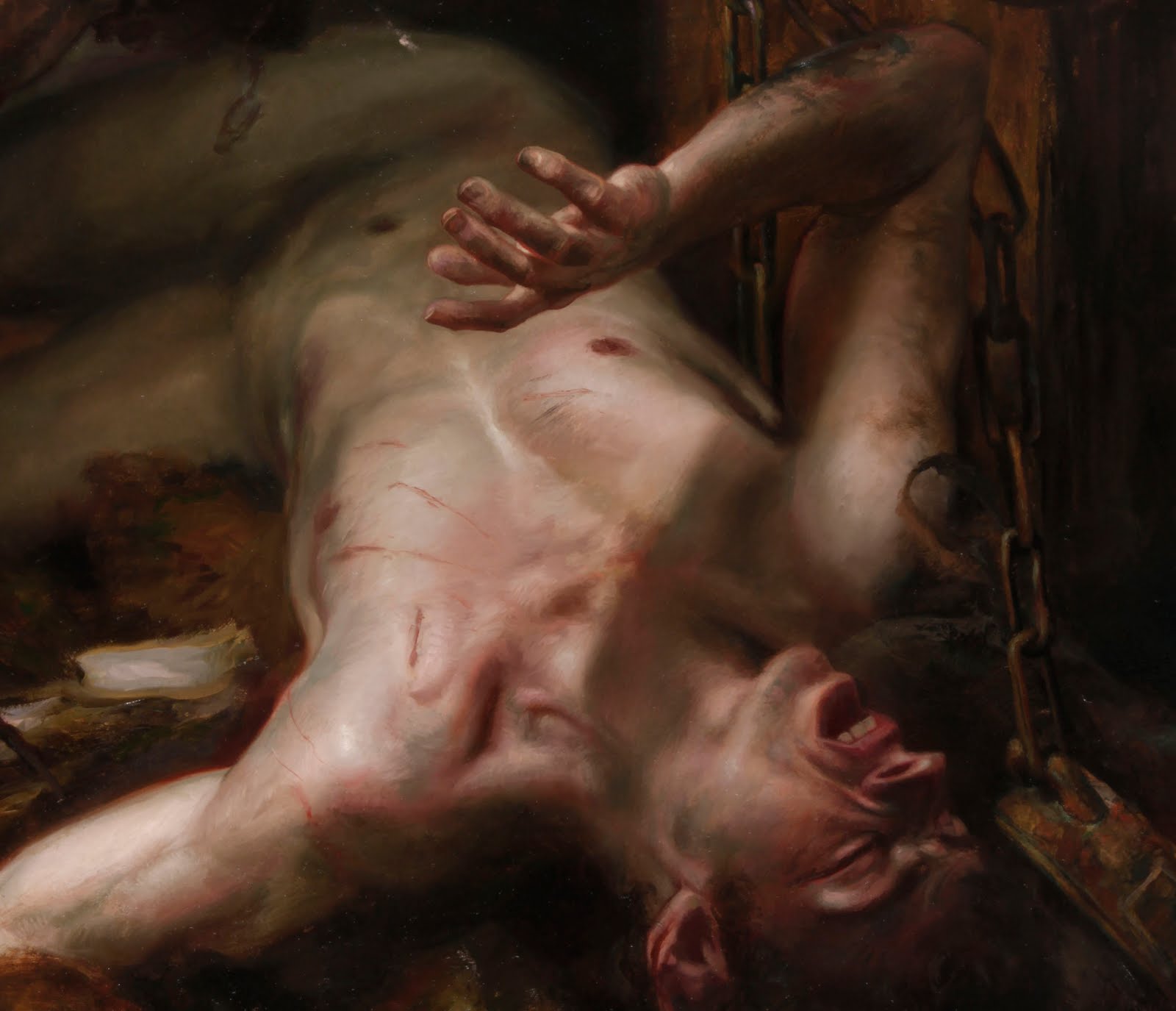
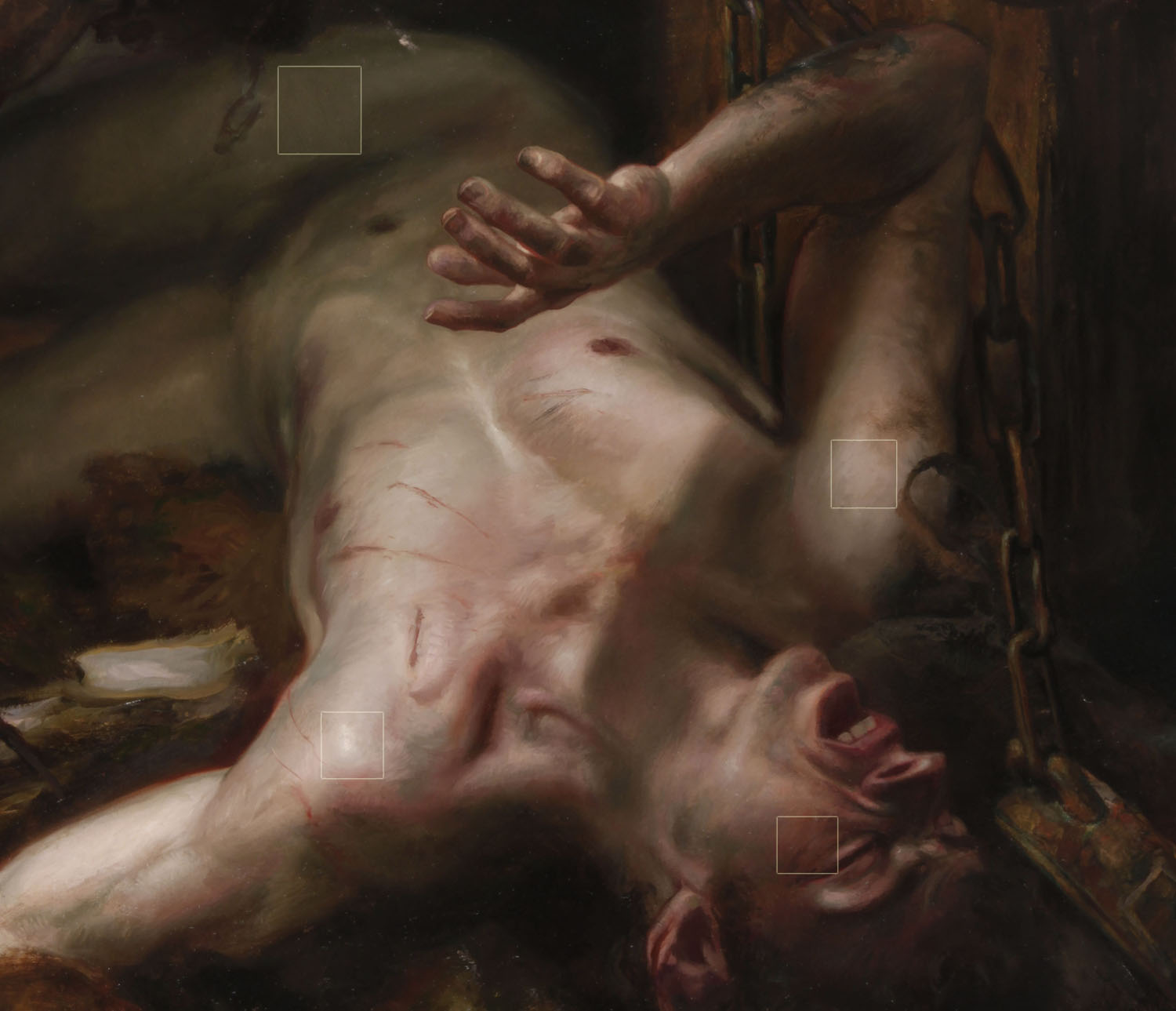
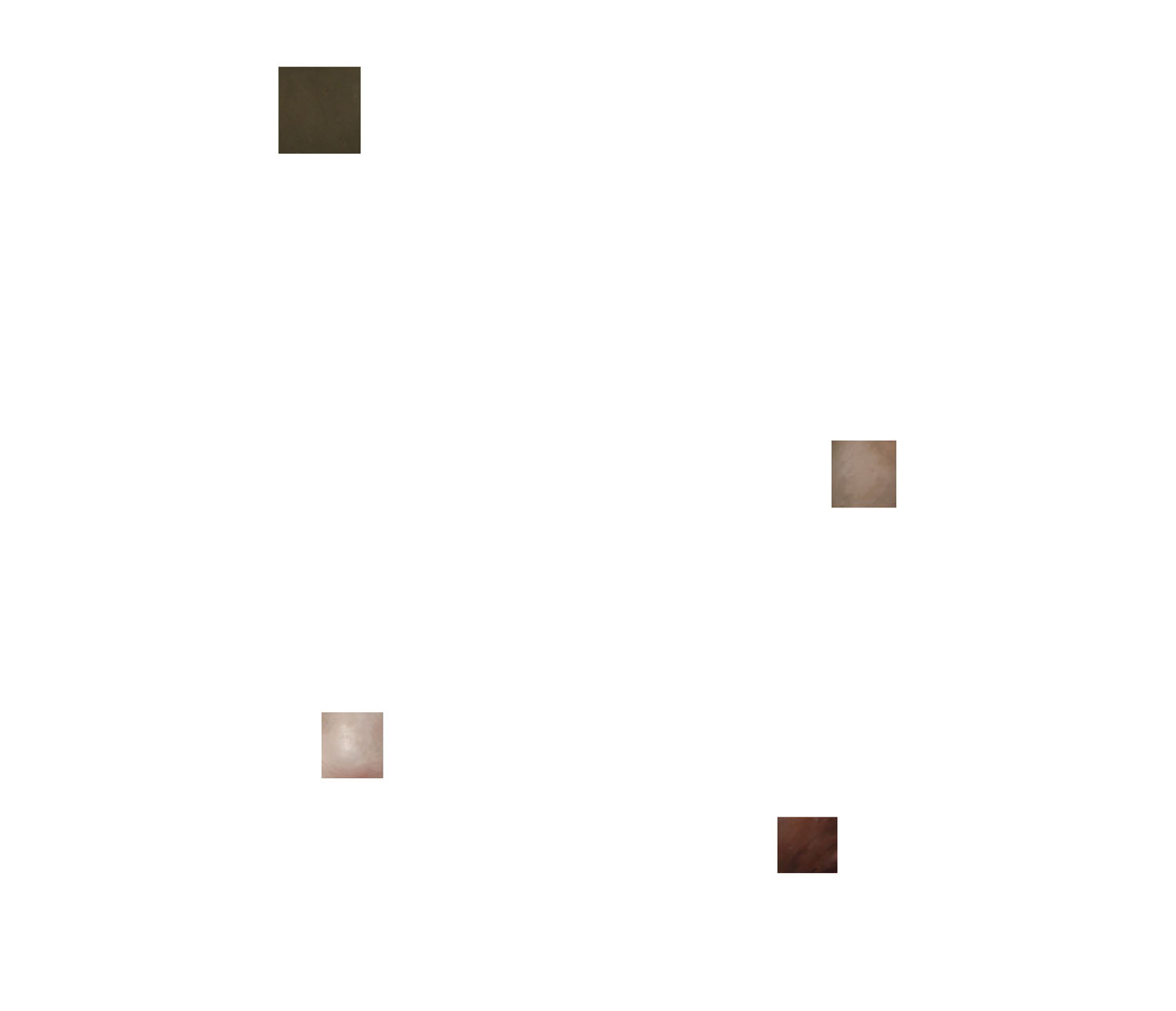
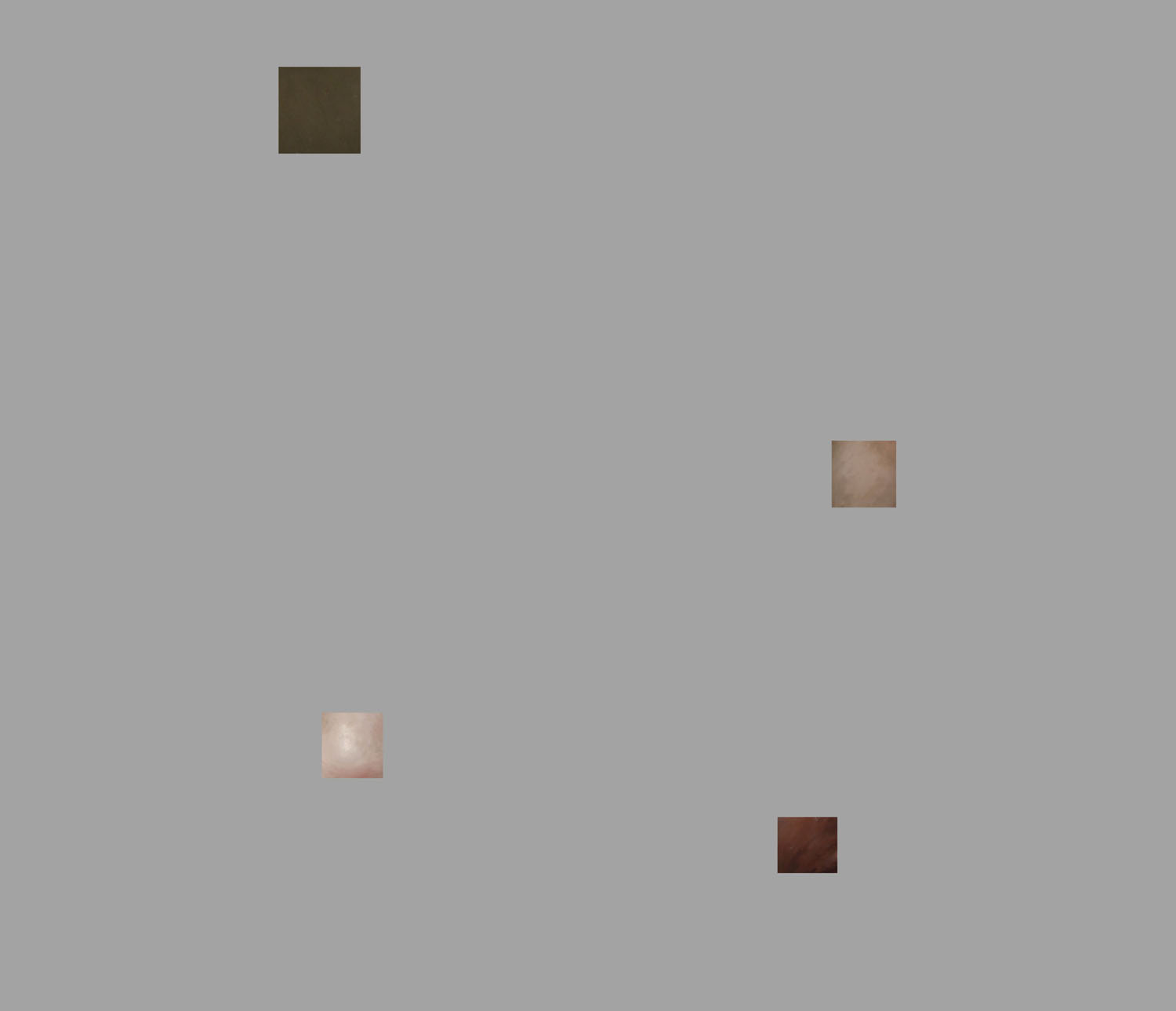
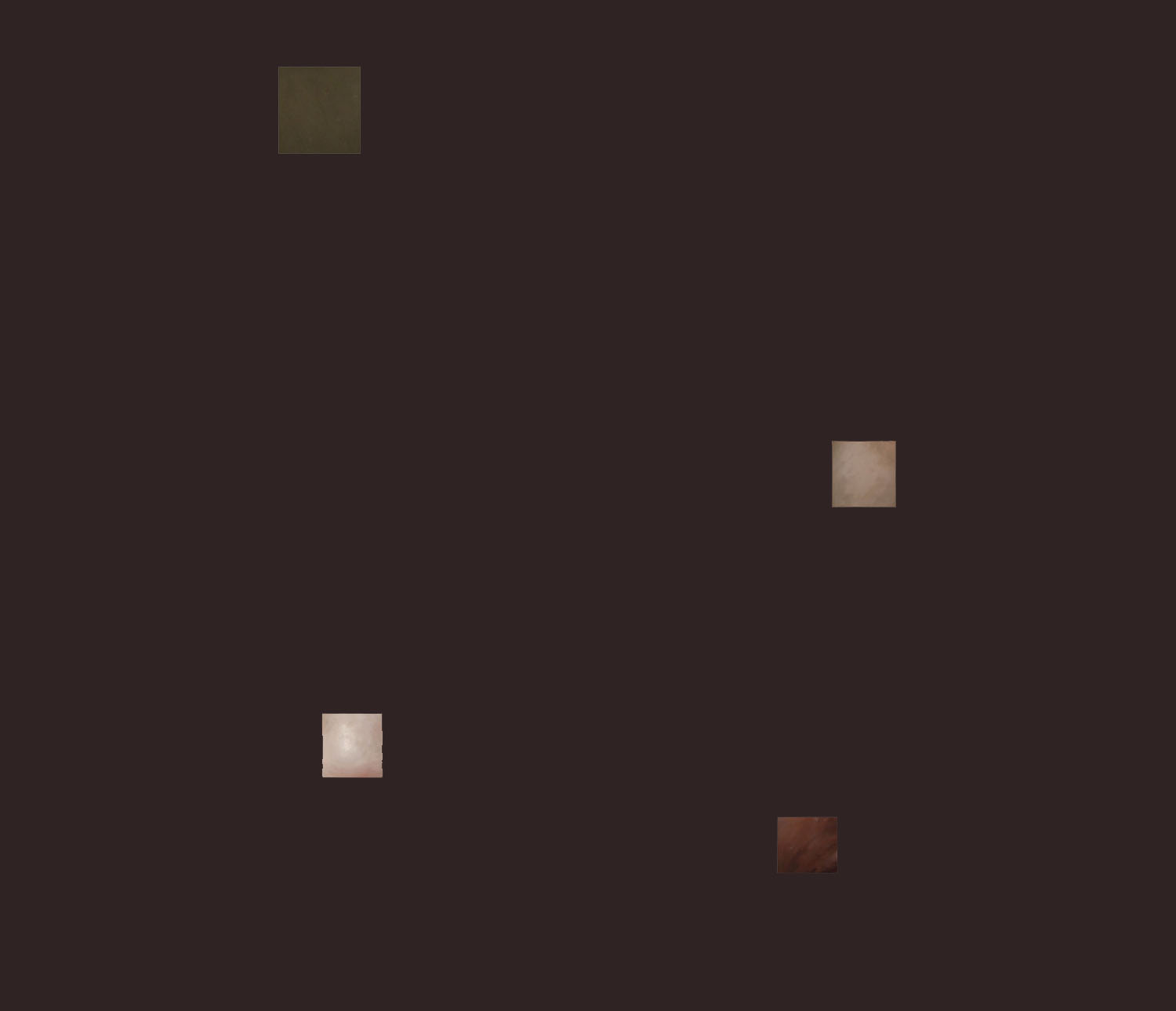
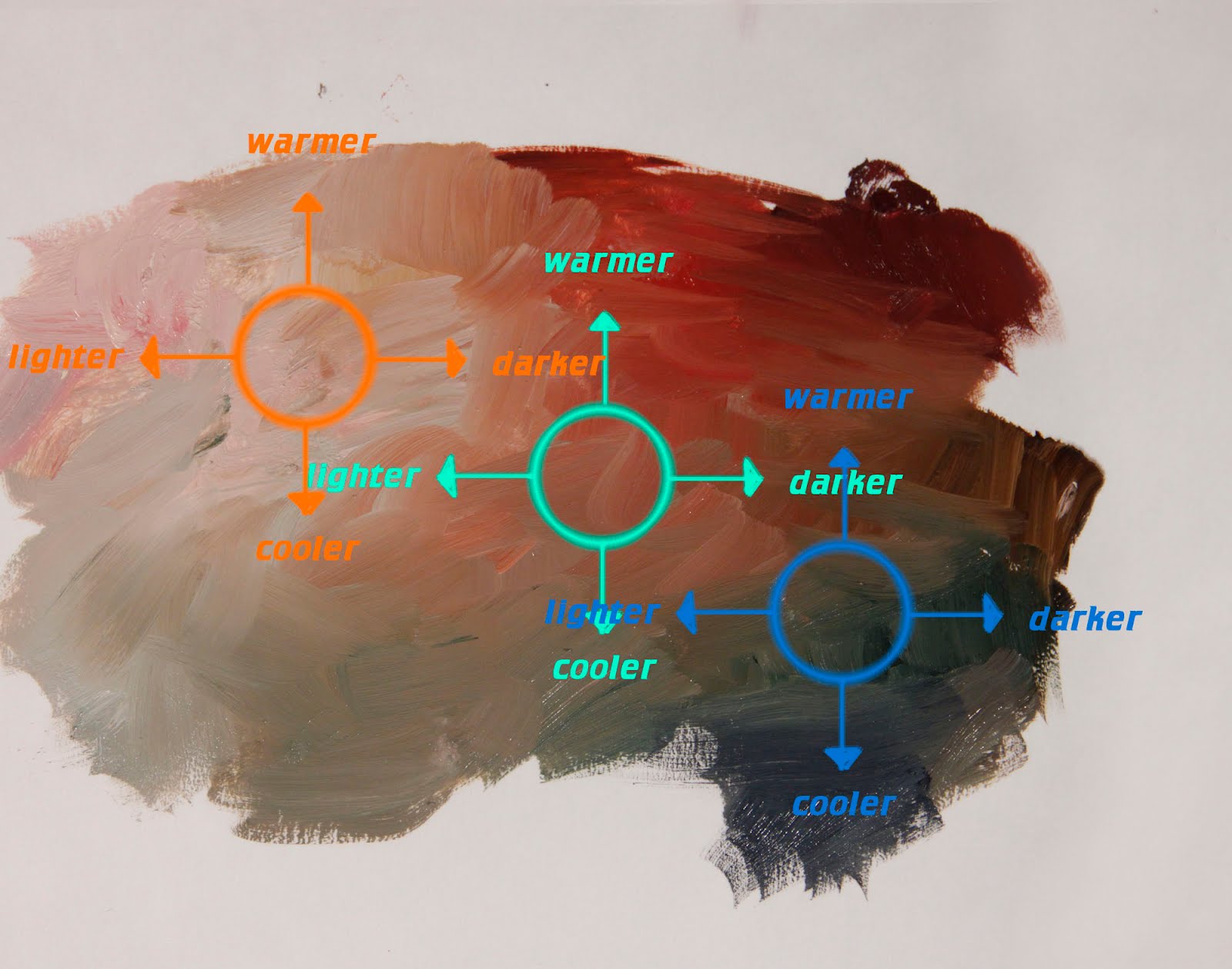
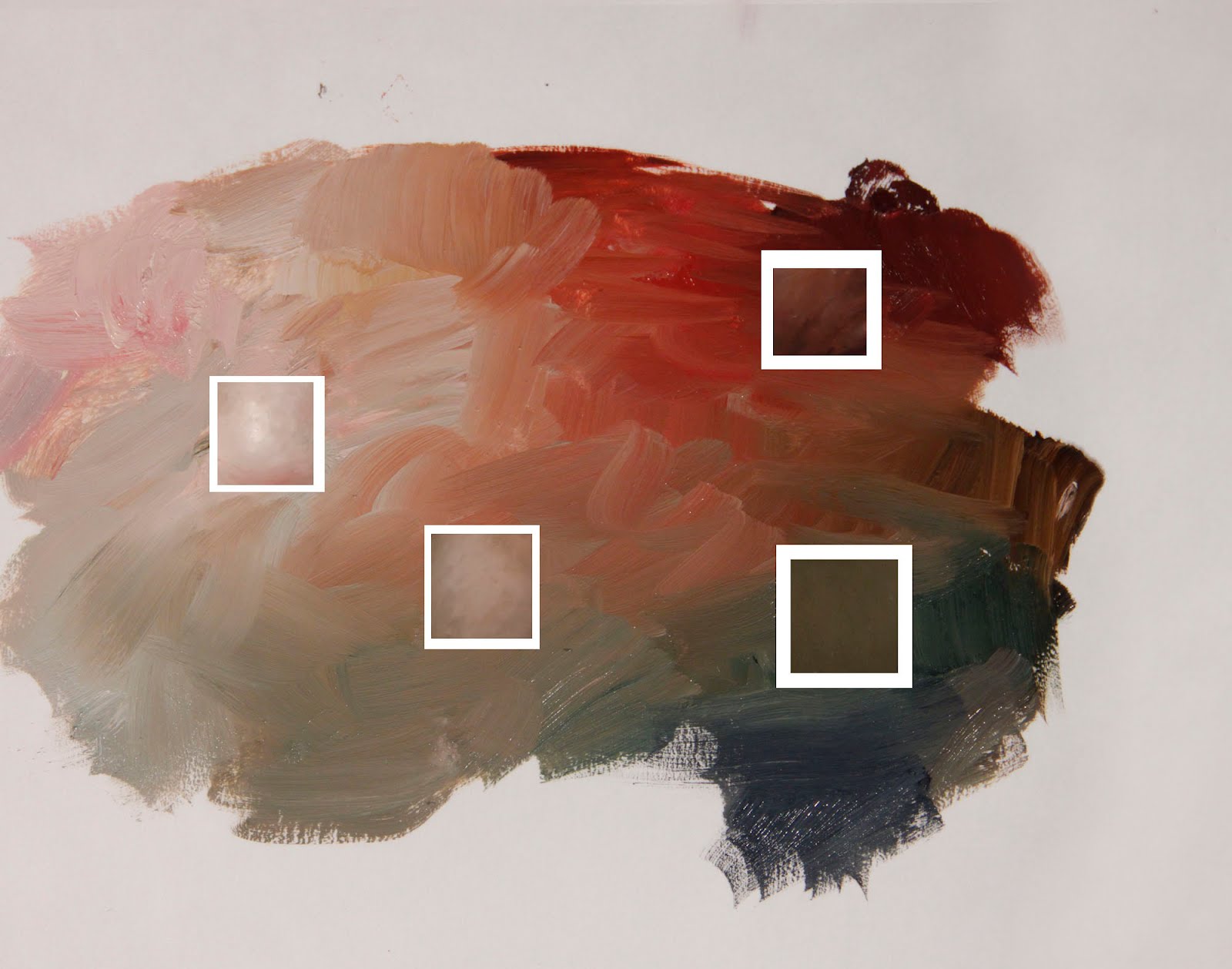
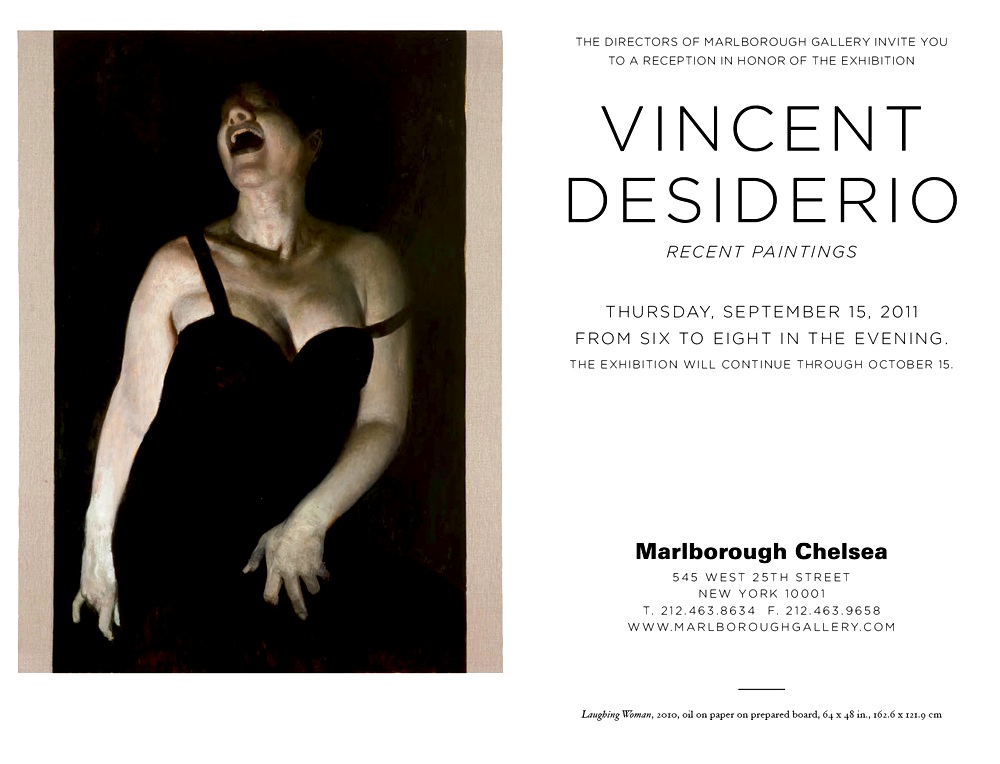

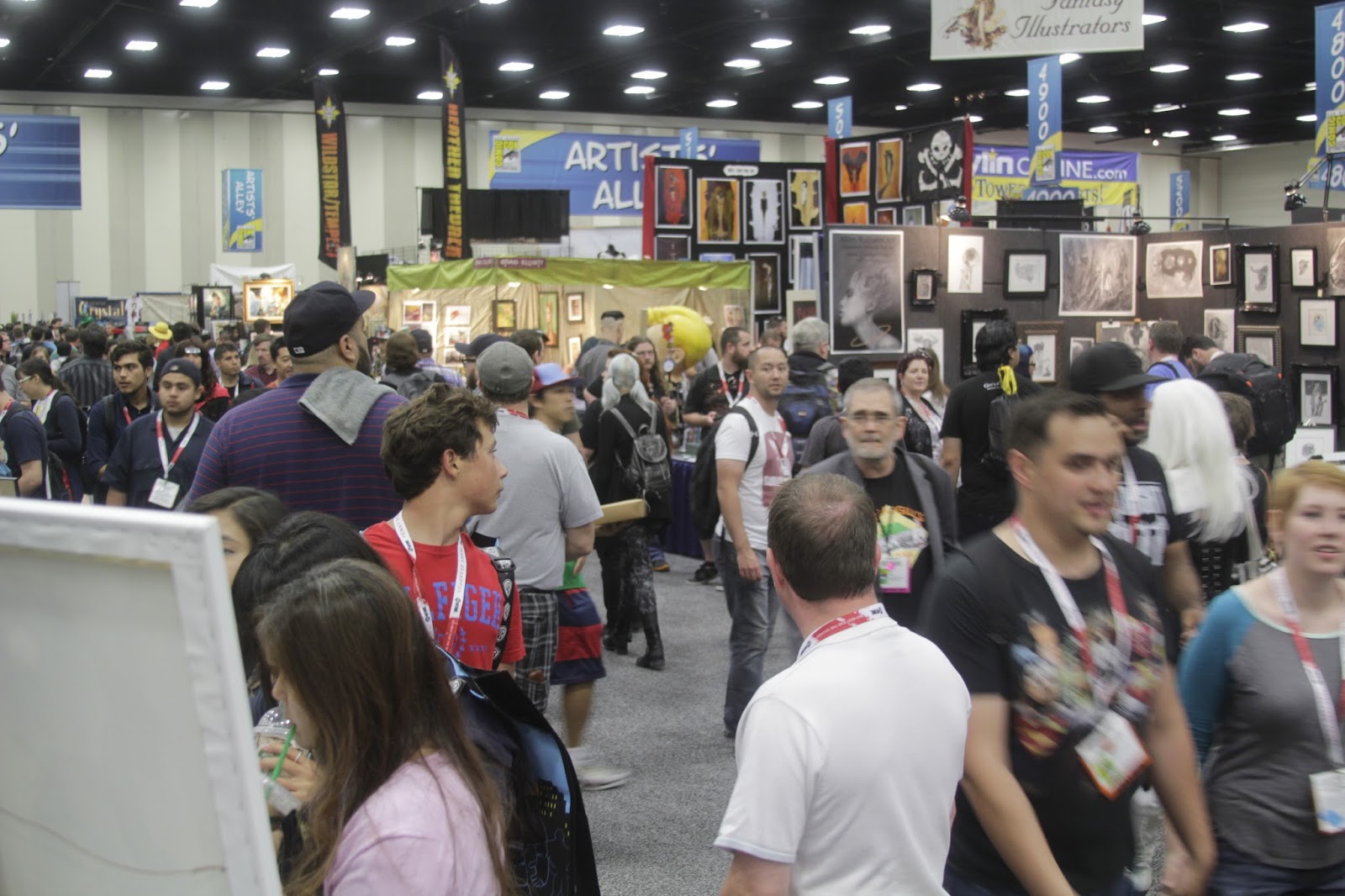
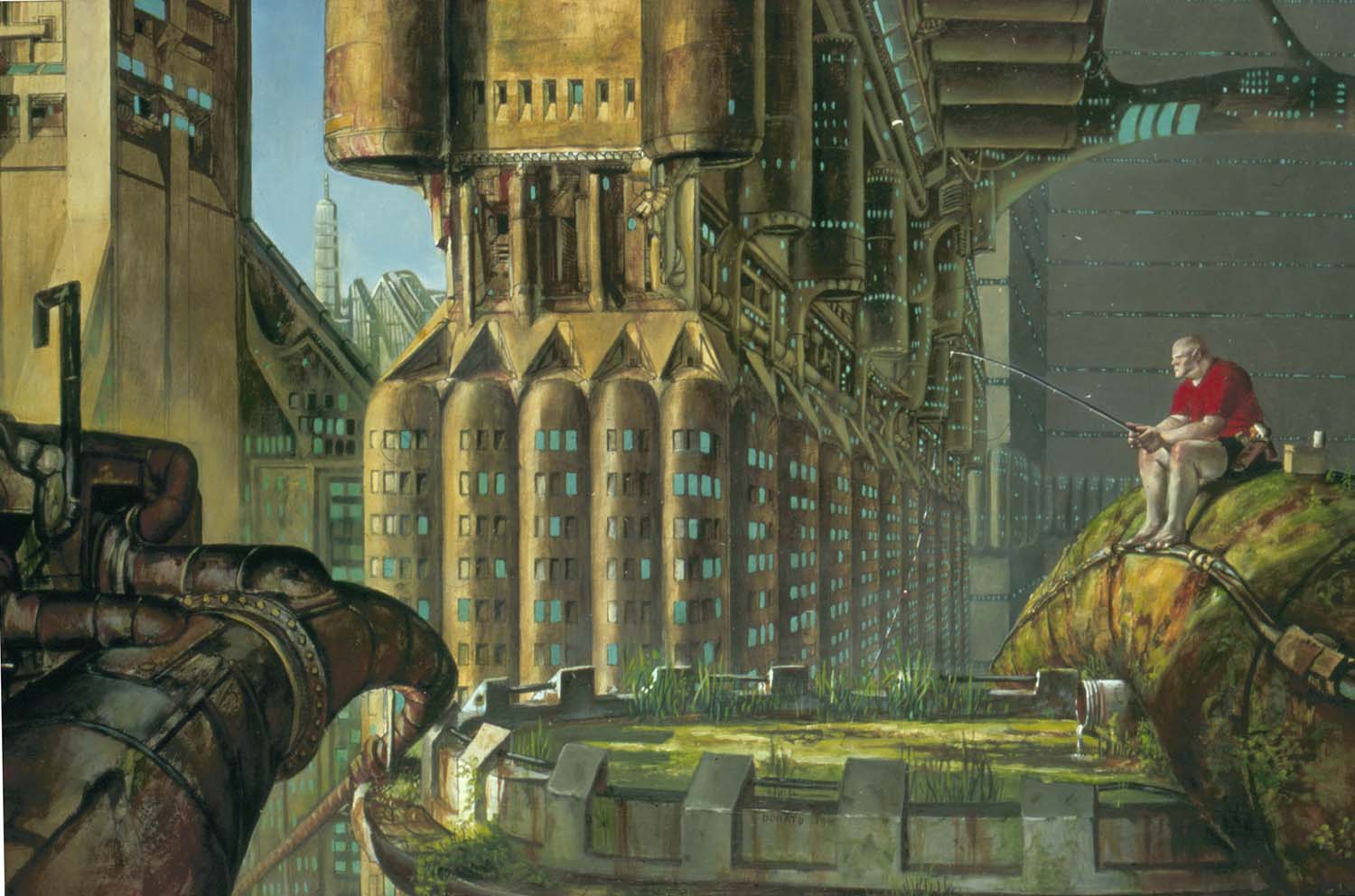
I've noticed that my paintings come out better the more I'm willing to dive into extreme ranges of value and tints. Thanks for the tips, Donato.
This is really helpful stuff! I do something similar with my reference photos. By sampling colors in photoshop from different areas of a face for example, it really shows just how great a shift there is between values and tints. Donato, could you please tell us what pigments you are using in your mud puddle? Thanks so much!
What are these painting colors?
Had the pleasure of seeing you talk on this at Illuxcon. It's a brilliant way of looking at mixing that goes well beyond a specific color list. Thanks for posting!
I just watched your Joan or Arc DVD and was very inspired by it. The way you explained the “mud” on the DVD was much clearer then you did on “the Mechanic” DVD, even though that was an awesome watch too.
What I got from it was- instead of doing separate color strings for warm and cools, you are mixing your strings together in a puddle. It seems like you get more interesting and complex grays that way. So if you want to darken a color, you can choose from any dark area in your puddle depending on if you want it to be warm or cool.
This is my understanding of what your doing, I hope thats correct. This is so helpful for me because my skin tones look so boring, and I couldn't figure out how to get those beautiful grays I see in your paintings.
I have watched your DVD twice already, and have learned so much. everything I know about painting I have learned from You and Dan Dos Santos's DVDs, and even though they are produced to generate income for you, they have been a god send to me, and I'm sure others. Thanks so much
One really good way I learned how to mix color was to set up a still life, draw it out and block it in, but *then* I would take a photo, upload it and bring it into photoshop. Then I would isolate colors into little squares and put them on the side of the photo in a white space. I would print this out and compare my block in with those colors. It was incredibly enlightening to go through this process and train my eye to see the color as it actually was rather than what I thought was there.
Donato your work is killing me! so good! i love the Joan of Arc dvd and feel incredibly inspired!!! THANKS 🙂
-Julia
Very informative. Thank you for that and also thank you for answering my question via email.
Bjoern
Great! Especially find the swatches on different backgrounds highly informative. Thank you!
Congratulations on the Joan of Arc DVD, Donato; a great triumph and a fantastic record of this period in your artistic career! I'm going use your mud puddle on my latest painting this very day. I'm predicting a massive leap forward in my own work…
Best wishes,
Patrick.
Donato, I caught your presentation at Illuxcon. It was very helpful, and I have been applying it with great success in my work.
I refer back to this article pretty much anytime I'm painting skin tones. It's sooo helpful.